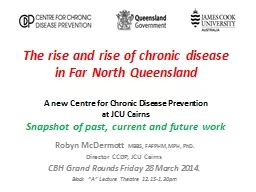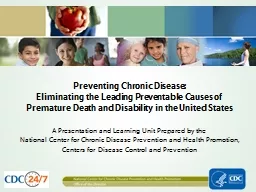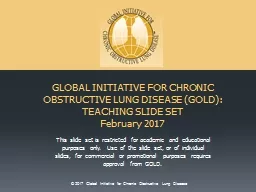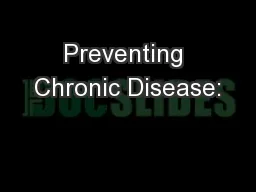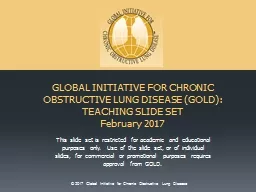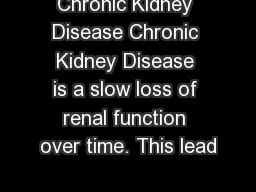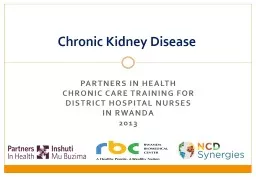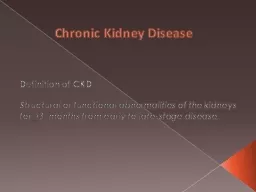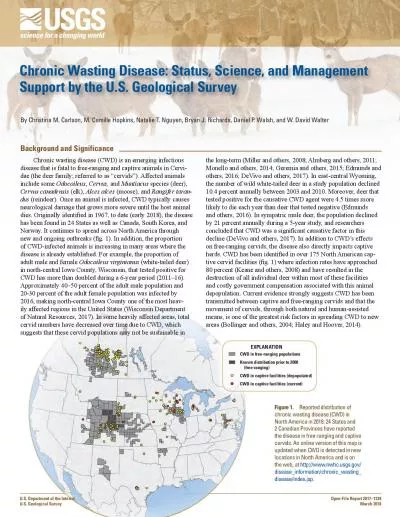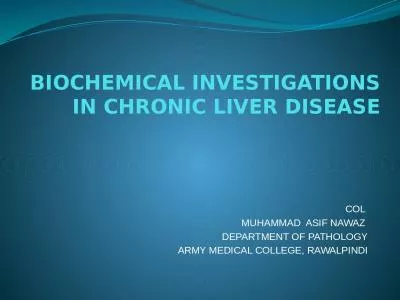PPT-The rise and rise of chronic disease in
Author : sherrill-nordquist | Published Date : 2019-06-26
Far North Queensland A new Centre for Chronic Disease Prevention at JCU Cairns Snapshot of past current and future work Robyn McDermott MBBS FAFPHM MPH PhD
Presentation Embed Code
Download Presentation
Download Presentation The PPT/PDF document "The rise and rise of chronic disease in" is the property of its rightful owner. Permission is granted to download and print the materials on this website for personal, non-commercial use only, and to display it on your personal computer provided you do not modify the materials and that you retain all copyright notices contained in the materials. By downloading content from our website, you accept the terms of this agreement.
The rise and rise of chronic disease in: Transcript
Download Rules Of Document
"The rise and rise of chronic disease in"The content belongs to its owner. You may download and print it for personal use, without modification, and keep all copyright notices. By downloading, you agree to these terms.
Related Documents

